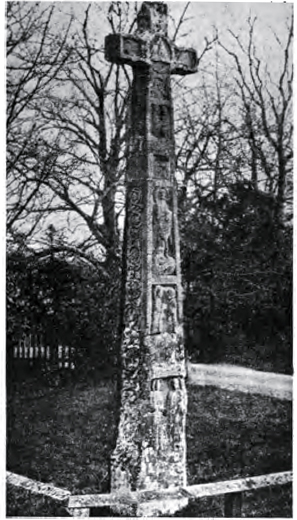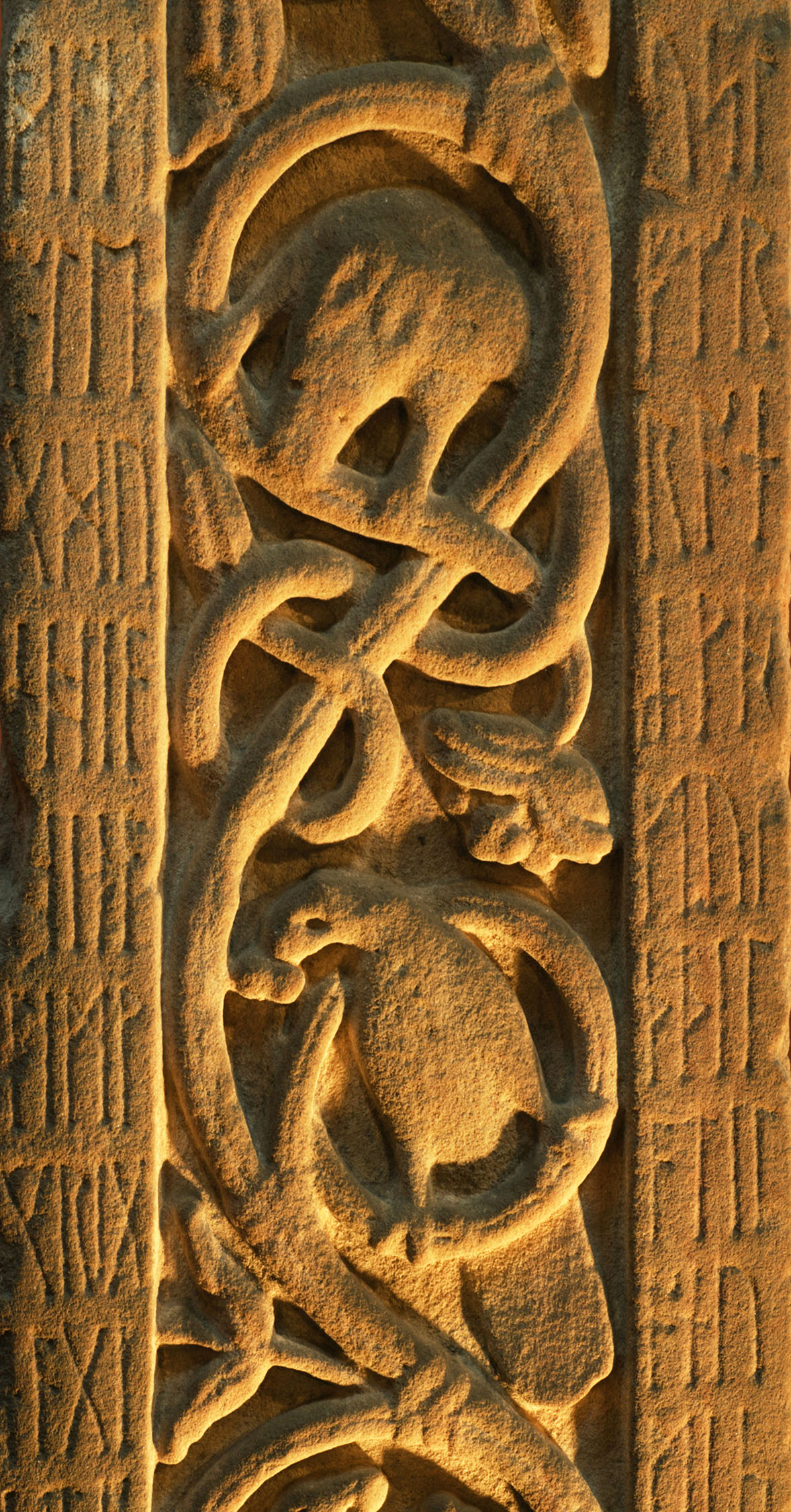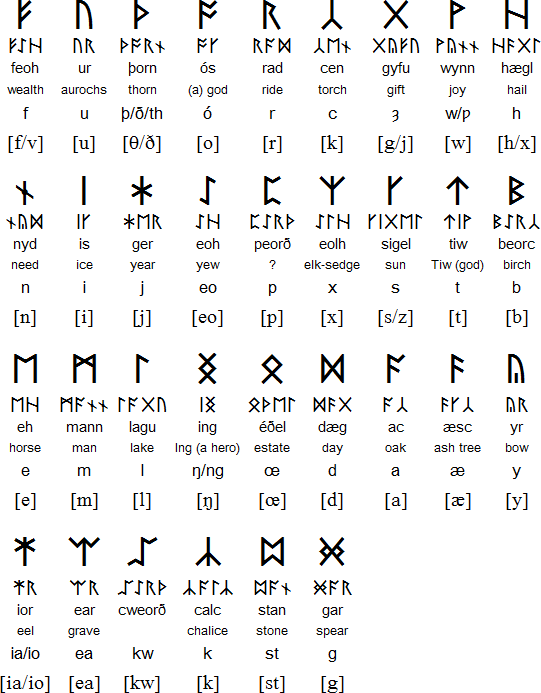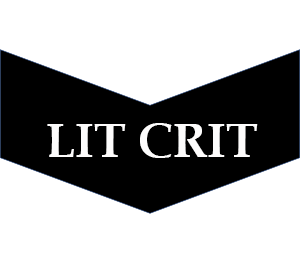anonymous (Anglo-Saxon)
7th-8th century
(In a vision, the cross of Christ reflects with awe on its part in the death of God.)

“The most beautiful of the medieval religious poems”. This is often said of The Dream of the Rood. The first time I read this assessment—I had never even heard of the poem—it was by the Anglo-Saxon scholar R. K. Gordon in the colorful old Everyman Library series. The description as beautiful captured my attention. And it is beautiful. The vivid imagery, the incorporation of heroic and mystical themes, the profound devotion, the ethereal vision, the very language. Seeing such a work called beautiful is gratifying, for it highlights a virtue that is often languishing in recent religious literature, and religious sensibility in general. In both East and West, the enjoyment of beauty has frequently been marred by a suspicion that it may tempt one to elevate the lower over the higher, or to submit to illusory or distracting pleasure. Calling a religious poem “beautiful” recalls a time and a place when beauty was a central value in the building of churches, in the composition of sacred music, in devotional images and writings, and even in the grounds for the faith commitment itself. There have been times and places when the contemplation and enjoyment of beauty was widely embraced, on the idea, as Aristotle said, that “Beauty is the gift of God.”
 Beauty is not a concept typically associated with the Middle Ages in the popular mind today. On the contrary, the current definitions of “medieval”, aside from the literal reference to the time period, are downright ugly. Merriam-Webster’s two figurative definitions are “having a quality (such as cruelty) associated with the Middle Ages”; and “extremely outmoded or antiquated”, as in “has medieval ideas about the role of women in our society”. Certainly life in the period roughly between 500-1500 AD in Europe was brutally harsh for the vast majority of people. Anyone (like my own adolescent self) who might wish to be transported back to the age of Arthur or Robin Hood must keep this in mind. And as a scientist I would be quick to admit the medievals’ agonizingly slow growth in knowledge of nature, the prevalence of superstition, and horrifyingly crude medical ideas and treatments. All that being undeniable, nevertheless the so-called Dark Ages had much brighter spots than this blanket term would suggest. Imagine a large chamber, where seated in a great circle are Boethius, Isidore of Seville, Thomas Aquinas, Duns Scotus, Anselm of Canterbury, Ibn Rushd (Averroes), Ibn Sina (Avicenna), William of Ockham, Peter Abelard, Bonaventure, Moses ben Maimon (Maimonides), Albertus Magnus, Roger Bacon, Al-Ghazali, and perhaps a dozen others gathered from the further reaches, from Africa and Asia. Listen to that conversation. Some are Christian, some Jewish, some Muslim, some perhaps leaning towards atheism or pantheism or another as yet undefined sort of metaphysic. Any of these thinkers can be read today to great profit, despite the immensity and importance of thought and discovery since. On certain topics this exchange would be no less stimulating and illuminating, even to us as 21st century educated people, than a similar summit of the greatest thinkers of the last hundred years. Perhaps we’d even come to wonder whether, as valuable as the Renaissance and Englightenment were, we as a culture might have thrown the medieval baby out with the bathwater and lost some older wisdom here and there.
Beauty is not a concept typically associated with the Middle Ages in the popular mind today. On the contrary, the current definitions of “medieval”, aside from the literal reference to the time period, are downright ugly. Merriam-Webster’s two figurative definitions are “having a quality (such as cruelty) associated with the Middle Ages”; and “extremely outmoded or antiquated”, as in “has medieval ideas about the role of women in our society”. Certainly life in the period roughly between 500-1500 AD in Europe was brutally harsh for the vast majority of people. Anyone (like my own adolescent self) who might wish to be transported back to the age of Arthur or Robin Hood must keep this in mind. And as a scientist I would be quick to admit the medievals’ agonizingly slow growth in knowledge of nature, the prevalence of superstition, and horrifyingly crude medical ideas and treatments. All that being undeniable, nevertheless the so-called Dark Ages had much brighter spots than this blanket term would suggest. Imagine a large chamber, where seated in a great circle are Boethius, Isidore of Seville, Thomas Aquinas, Duns Scotus, Anselm of Canterbury, Ibn Rushd (Averroes), Ibn Sina (Avicenna), William of Ockham, Peter Abelard, Bonaventure, Moses ben Maimon (Maimonides), Albertus Magnus, Roger Bacon, Al-Ghazali, and perhaps a dozen others gathered from the further reaches, from Africa and Asia. Listen to that conversation. Some are Christian, some Jewish, some Muslim, some perhaps leaning towards atheism or pantheism or another as yet undefined sort of metaphysic. Any of these thinkers can be read today to great profit, despite the immensity and importance of thought and discovery since. On certain topics this exchange would be no less stimulating and illuminating, even to us as 21st century educated people, than a similar summit of the greatest thinkers of the last hundred years. Perhaps we’d even come to wonder whether, as valuable as the Renaissance and Englightenment were, we as a culture might have thrown the medieval baby out with the bathwater and lost some older wisdom here and there.
An interesting note on this topic is that the derogatory meanings of “medieval” are rather recent historically. Even in the literal sense, the importation of that word into English as a portmanteau of the Latin medium + ævum dates from around 1817. I think it was not until smack in the middle of the somewhat self-important Victorian era that we first see this word in publication as an insult. Even as of 1933, when the Oxford English Dictionary was completed, it contained not a single pejorative definition of “medieval”.
Returning to The Dream of the Rood, this poet—this writer of a few beautiful words—who was this person? Was it Cædmon, or Cynewulf, or someone from whom we have no other works? Who knows. Barring a phenomenal manuscript discovery, no one will ever know. Whoever authored it, The Dream of the Rood was first written in the Anglo-Saxon version of the northern runes, the futhorc, whose very images convey a deeply mystical quality to many of us today. Runic lines from the poem can still be seen carved into the stone face of the 8th century Ruthwell Cross in Scotland (see left and below), making it likely the most ancient original specimen of English literature preserved anywhere. In fact, despite their widespread use for centuries, runes survive in less than 200 Anglo-Saxon artifacts today, mostly in brief engravings on swords and other possessions. With Britain’s increasing communication with the continent in the latter centuries of the first millennium AD, runes gradually gave way to the Latin alphabet, to which some letters were added to accommodate distinctive Anglo-Saxon sounds. We still have the whole poem of the Dream of the Rood today, rather than just the few runic lines on that monument, thanks solely to the so-called Vercelli Book, a 10th century anthology of favorite Anglo-Saxon works that somehow ended up in Vercelli, Italy (see above).
This work exhibits a proliferation of poetic skill. The words are meticulously chosen, but simple, fresh, and captivating. The language is entirely devoid of the trite phrases so common in religious poems—not only then, but in our own day in many tired worship song lyrics and the ingroup parlance of Christian circles. In The Dream of the Rood, the narrator steps up and describes a vision (kicking off a long tradition of English dream poems) of the cross, the holy rood. It appears in glorified form, but still bearing signs of its history. The cross itself then takes the stage to tell its own story, its participation in the death of God, the crucifixion of Christ. The rood mysteriously reminisces: “Long ago was it– I still remember it…”. It tells of how it “bore aloft the mighty King, the Lord of heaven”, and was wounded along with Christ. The rood experiences the tension of being the means by which this terrible event took place, and at the same time helping to pave the route to salvation for all humanity. There is a subtle but potent theological point being made here, in the cross being complicit yet devoted. The cross is a representative, even perhaps the archetype, of the believer. One of the central paradoxes of Christianity is the idea that Jesus had to die, and that each of us is complicit in that death because of sin, although devoted and a co-sufferer with Christ. To end the vision, the rood encourages the dreamer to retell the story to others, and explain the meaning of the central event: “…each soul which desires to dwell with the Lord must through the cross seek the kingdom which is far from earth.” The narrator then worships, and brings the poem to a close, overcome with awe and anxious to be in Paradise.
An intriguing aspect to The Dream of the Rood is its conjunction of the three main genres of Anglo-Saxon literature, despite its short length and restricted focus. It is obviously a religious poem. But, just as religion is itself (by definition, whether one ascribes to it or not) a connection between the transcendent and the earthly, there is a melding or perhaps tension in the presentation of this work between the spiritual and the cultural. It is constructed in a manner similar to Anglo-Saxon riddles, where a common object or concept is presented in the first person, and the reader is left to determine what is speaking. To take one adapted for Tolkien’s The Hobbit: “[I am] a box without hinges, key, or lid; yet golden treasure inside is hid.” It is an egg! In The Dream of the Rood the vision is presented in a similar way, and we the readers are to discern the meaning. The cross describes itself to the narrator in the first person, and then encourages him to understand and broadcast its identity and significance. The riddle genre here is appropriate, even ingenious, given the supernatural and therefore perplexing quality of the material, and the necessity that each person figure it all out for oneself.
The other incorporated genre is the heroic adventure story, of which Beowulf is the best and best known. Jesus is no victim here, but a warrior, “the young Hero”. Jesus conquers death “firm and unflinching” by means of the cross, mounting it like a steed. He dies, but his death is related to the weary collapse of a fighter at the close of a battle. (Some literary critics fail to see this imagery within imagery, and misinterpret the cross as claiming that Jesus never died). The analogy holds rather because God raises Jesus from the dead, to claim his Kingdom and, the rood tells us, to honor his worthy brother-in-arms, the rood, “beyond all the trees of the forest”.
A BIT MORE INDULGENCE IN RUNES AND OLD ENGLISH
Following are lines from The Dream of the Rood in the Anglo-Saxon (Old English) runic alphabet (fuþorc = futhorc, or futhark), as represented on the Ruthwell Cross; then a transliteration into the later Latin alphabet, as the Anglo-Saxons modified it for their use (on which see below); and then a translation into Modern English.  This inscription was made in the Northumbrian (Norðanhymbrisċ) dialect, as the Ruthwell cross was in that kingdom. Several differences can be seen between the Ruthwell inscription and the more standard form of the language as represented in the Vercelli manuscript, where these lines read as follows:
This inscription was made in the Northumbrian (Norðanhymbrisċ) dialect, as the Ruthwell cross was in that kingdom. Several differences can be seen between the Ruthwell inscription and the more standard form of the language as represented in the Vercelli manuscript, where these lines read as follows:
Crist wæs on rode. Hwæðere
þær fuse feorran cwoman
to þam æðelinge.
Ic þæt eall beheold.
The Anglo-Saxon Latin alphabet has four letters we no longer use. Notice by comparing the letters with the runes in the inscription, that the letter thorn (þ) is derived from the rune. By the end of the 8th century this letter would be replaced when in the interior of words by the Roman-derived ðæt, later called eth (ð), as seen in the manuscript version. Both were eventually replaced by “th” [why, right?!]. The only other letter in this passage that has not survived into modern English is ash (æ), which was eventually split into two letters “ae” (e.g., ærial to aerial), or else reduced to “e” (e.g., dæmon to demon). In some cases the Americans drop the “a” but the British retain it (e.g., eon/aeon, hyena/hyaena). These three letters are still in use in Icelandic. One remaining Old English letter is no longer in use in any language: wynn (ƿ), which like thorn was derived from its rune. In the passage above, the runic wynn was transliterated as “w”, which was common since the sound of wynn was the same as “w”.

But let’s go back even further than the Latin alphabet, though, to the really cool stuff: fuþorc! My cultural bias will be evident when I admit this: a part of me thinks that a fascination with runes is simply equivalent with having an imagination.
Except for the Latin and perhaps Greek brought by the Romans, there appears to have been no writing in Britain until the Anglo-Saxons brought Germanic runes with them (called the Elder Futhark) when they invaded in the 5th century. A separate lineage spread to the Nordic countries (the Younger Futhark). In Britain, the Anglo-Saxon Futhorc, as it came to be called (after the pronunciation of the first 6 runes), became the first medium of English writing. It was used for several centuries, but was gradually replaced by the Latin alphabet (though with some modifications as mentioned above). By the time of the Norman Conquest of 1066, runes had fallen completely out of use. An intriguing footnote is that, perhaps like Latin or Greek in the English-speaking world today, some people (many at first but decreasing over the centuries) could read runes after they ceased to be actively used. Anglo-Saxons, Normans, Celts, and other residents of Britain would have seen runes carved on buildings, monuments, weapons, and other crafts in addition to manuscripts, long after they ceased to be used actively. Today, however, sadly, there are less than 200 objects with Anglo-Saxon runes left in existence. The Ruthwell Cross and its inscription of the Dream of the Rood is the oldest surviving example of poetry or any other literature in futhorc.
Below is the complete Anglo-Saxon futhorc alphabet, including each rune, the name of the letter in both runic and Latin alphabets, the symbol’s early meaning, the Latin letter(s) that would eventually replace it, and the typical pronunciation in the International Phonetic Alphabet.

Tidbits of Significance
(The Old English below is from the Vercelli book, as edited for the Complete Corpus of Anglo-Saxon Poetry, part of the Internet Sacred Text Archive. Each line is broken in two with a caesura (||), indicating a pause in reading. Modern English poetry translations are by Jonathan A. Glenn; prose translations are by R. K. Gordon. Numbers are lines in the poem.)
Opening lines:
Hwæt! Ic swefna cyst || secgan wylle,
hwæt me gemætte || to midre nihte,
syðþan reordberend || reste wunedon!
þuhte me þæt ic gesawe || syllicre treow
on lyft lædan || leohte bewunden,
beama beorhtost.
Listen! The choicest of visions I wish to tell,
which came as a dream in middle-night,
after voice-bearers lay at rest.
It seemed that I saw a most wondrous tree
born aloft, wound round by light,
brightest of beams.
Lo! I will declare the best of dreams which I dreamt in the middle of the night, when human creatures lay at rest. It seemed to me that I saw a wondrous tree rising aloft, encompassed with light, the brightest of crosses.
-1-6.
The holy rood’s story
Ealle ic mihte
feondas gefyllan, || hwæðre ic fæste stod.
All fiends
I could have felled, but I stood fast.
I could have felled all the foes, yet I stood firm.
-37-38.
Rod wæs ic aræred. || Ahof ic ricne cyning,
heofona hlaford, || hyldan me ne dorste.
Rood was I reared. I lifted a mighty King,
Lord of the heavens, dared not to bend.
As a rood was I raised up; I bore aloft the mighty King, the Lord of heaven; I durst not stoop.
-44-45.
sceadu forðeode,
wann under wolcnum. || Weop eal gesceaft,
cwiðdon cyninges fyll. || Crist wæs on rode.
…a shadow went forth,
dark under heaven. All creation wept,
King’s fall lamented. Christ was on rood.
…a shadow went forth, dark beneath the clouds. All creation wept, lamented the King’s death; Christ was on the cross.
-54-56.
Iu ic wæs geworden || wita heardost,
leodum laðost, || ærþan ic him lifes weg
rihtne gerymde, || reordberendum.
Once I became hardest of torments,
most loathly to men, before I for them,
voice-bearers, life’s right way opened.
Long ago I became the severest of torments, most hateful to men, before I opened to mankind the true path of life.
-87-89.
Hider eft fundaþ
on þysne middangeard || mancynn secan
on domdæge || dryhten sylfa,
ælmihtig god, || ond his englas mid
…Again sets out hither
into this Middle-Earth, seeking mankind
on Doomsday, the Lord himself,
Almighty God, and with him his angels
…hither again will the Lord Himself make his way to this world to seek mankind on the day of judgment, Almighty God and His angels with Him
-103-106.
ac ðurh ða rode sceal || rice gesecan
of eorðwege || æghwylc sawl,
seo þe mid wealdende || wunian þenceð.
through that rood shall each soul
from the earth-way enter the kingdom,
who with the Wielder thinks yet to dwell.
…each soul which desires to dwell with the Lord must through the cross seek the kingdom which is far from earth.
-119-121.
The narrator’s response to the vision:
Wæs modsefa
afysed on forðwege, || feala ealra gebad
langunghwila.
…My heart was
impelled on the forth-way, waited for in each
longing-while.
My soul was eager to depart; I felt many yearnings within me.
-124-126.
ond min mundbyrd is
geriht to þære rode.
…my hope of protection
reverts to the rood.-130-131.
Nah ic ricra feala
freonda on foldan, || ac hie forð heonon
gewiton of worulde dreamum, || sohton him wuldres cyning,
lifiaþ nu on heofenum || mid heahfædere,
wuniaþ on wuldre, || ond ic wene me
daga gehwylce || hwænne me dryhtnes rod,
þe ic her on eorðan || ær sceawode,
on þysson lænan || life gefetige
ond me þonne gebringe || þær is blis mycel,
dream on heofonum, || þær is dryhtnes folc
geseted to symle, || þær is singal blis
…I have not now many
strong friends on this earth; they forth hence
have departed from world’s joys, have sought themselves glory’s King;
they live now in heaven with the High-Father,
dwell still in glory, and I for myself expect
each of my days the time when the Lord’s rood,
which I here on earth formerly saw,
from this loaned life will fetch me away
and bring me then where is much bliss,
joy in the heavens, where the Lord’s folk
is seated at feast, where is bliss everlasting
I have not many powerful friends on earth, but they have gone away hence rom the joys of the world, have sought the King of heaven, live now in heaven with God the Father, dwell in glory; and each day I look for the time when the Lord’s cross, which erstwhile I saw here on earth, will fetch me from this fleeting life, and bring me then where there is great gladness, joy in heaven, where God’s people are placed at the feast, where there is bliss unending…
-131-141.
Si me dryhten freond,
se ðe her on eorþan || ær þrowode
on þam gealgtreowe || for guman synnum.
He us onlysde || ond us lif forgeaf,
heofonlicne ham.
…May he be friend to me
who here on earth earlier died
on that gallows-tree for mankind’s sins.
He loosed us and life gave,
a heavenly home.
May the Lord, who here on earth suffered aforetime on the cross for the sins of men, be a friend unto me; He has redeemed us and has given us life, a heavenly home.
-144-148.
Tips
READ THIS WHEN…
…you are tired of modernity and hanker for the simple and profound imagery of a medieval poet;
or,
…you sense a triteness or dryness to your religious sensibilities and could use an infusion of ancient vision.
IF YOU LIKE THIS, YOU’D LIKE:
(for the delver into Anglo-Saxon poetry:)
- Beowulf (7th century)
- Cynewulf, Elene (8th century)
- Later Genesis (9th century)
- The Battle of Maldon (10th century)
(for the seeker of medieval religious visions:)
- William Langland, Piers Plowman (1367-1386).
- Pearl (late 14th century).
- Julian of Norwich, Revelations of Divine Love (late 14th century).
- Theresa of Ávila, The Road of Perfection (late 16th century).
Find It!
Hardcover: This is the dream volume for the fan of things Anglo-Saxon (who nevertheless wants to read in Modern English!). Organized by manuscript, this contains all of the verse we have of the English before the Norman invasion of 1066.
Paperback: Hamer’s careful edition has all the important shorter works of Anglo-Saxon poetry. Or, for a smaller volume here is the Penguin edition.
Lit Crit
Following are excerpts from three published commentaries on The Dream of the Rood. For this judicious selection and editing I am grateful to Sara Paccione, M.A. This is the first of several Reflections on Great Literature entries that will feature a sampling of professional critical analysis thanks to Ms. Paccione’s research. To locate these entries specifically, simply enter “Paccione” in the search window.
Adelheid L. J. Thieme. “Gift-giving as a vital element of salvation in The Dream of the Rood.” (1998)
Barbara Raw. “The cross in ‘The Dream of the Rood’: martyr, patron and image of Christ.” (2007)
Leanne Waters. “Bridging the gap: The creation of unity through the representation of the cross in The Dream of the Rood.” (2014)
Thieme, Adelheid L. J. “Gift-Giving as a Vital Element of salvation in The Dream of the Rood.” South Atlantic Review 63.2 (1998): 108-23.
- “The Dream of the Rood” is a poem which effectively fuses vital elements of the heroic code with one of the most conventional themes in Latin Christian poetry, the crucifixion and its significance for mankind” (108).
- “Christ is not the merciful, loving, meek man of affliction whose victory over sin and death seem to be a defeat rather than a triumph. Instead, he is cast in the role of a bold, strong, courageous king whose salvific act appears to be a deed of heroic prowess. The cross itself is portrayed as his lord’s retainer whose most outstanding characteristic is that of unwavering loyalty” (108).
- “…one significant ingredient of the Germanic code of conduct, which is often alluded to in the poem, has so far been overlooked… the practice of gift exchange, which prevailed in Anglo-Saxon society” (108).
- “…the gift serves as a means of creating a firm bond between lord and retainer. While the lord recognizes his retainer’s service by the gift of gold, the retainer is bound by his honor to reciprocate by unfaltering service” (108).
- The dreamer in the poem “finally comes to realize that the vision of the gold-adorned cross is a gift from God which he is called upon to reciprocate by composing the poem. The poem, in turn, can be interpreted as a gift to the audience, so that the people who listen to it may render Christ the gift of faith that his act of salvation demands” (109).
- Gift giving in The Dream of the Rood “emphasizes the magnitude of God’s gift of redemption to mankind and the duty of each believer to reciprocate by a countergift,” and it is also used to “establish the continuity of pre-Christian and Christian values” (109).
- “…the Rood poet also refers to moral principles prevalent in Anglo-Saxon culture in order to accentuate that the values with which his people were familiar in a pre-Christian, secular world are basically identical with those in a Christian setting” (109).
- “… employs the traditional practice of gift exchange between lord and retainer as a model for the mutual relationship between God and man” (109).
- “The cross prides itself that Christ’s servants, at their lord’s behest, ‘gyredon me / golde ons seolfre’ (ll.77) [adorned me with gold and with silver]. Elevated to its high position… the cross is empowered to act as a lord itself” (111).
- The poet “casts himself in the role of a lordless exile” and “is glad to accept the cross as his lord” (111).
- “The dreamer considers it his duty, as the cross’s and Christ’s loyal retainer, to inspire the faithful to respond to the divine gift of salvation by the only countergift acceptable to God, namely unconditional obedience and fervent devotion” (111).
- “The rood attracts the dreamer’s interest because, despite its conspicuous magnificence, it displays traces of strife and suffering… The cross expounds that the gleaming treasures are a reward for the wounds which it has contracted in the service of a most worthy lord” (112).
- “Christ submitting himself to the Father and carrying out the divine plan of man’s salvation is comparable to Beowulf, who submits himself to Hygelac and employs his strength for the benefits of his lord’s realm” (113).
- “What is required of the rood is an inversion of the usual contents of retainership. Instead of engaging in action and defending or avenging its lord, the rood must look on passively while its lord is tortured by vile human beings and even facilitate that torture” (114).
- “…the cross desires nothing more than saving its lord’s life. At his behest, however, it must agree to becoming its lord’s slayer” (114).
- “By manipulating this theme, the poet imparts a crucial element of the Christian faith to his Anglo-Saxon audience. He stresses the notion that the gift of salvation is so great that it transcends human understanding” (114).
- “God requires man to serve him with utter obedience, even if this runs counter to normal human expectations” (115).
- “After having been despised and neglected for a long time, the rood ultimately comes to experience glory and honor… it is transformed into a trophy of victory. No longer a sign of shame and defeat, it gleams in splendor as a sign of triumph” (115).
- “Just as Mary is raised above all other women by the superior status accorded to her in heaven, the rood is henceforth elevated above all other trees by these treasures” (116).
- “For its service, it reaps immortal fame, the most coveted fruit of labor that a retainer could possibly expect” (116).
- “In accordance with the concept valid in gift economies that only the most precious material objects are appropriate means of expressing esteem and reverence, the disciples bestow on the holy rood, the lord’s visible servant on earth, their very best” (116).
- “Just as Mary is raised above all other women by the superior status accorded to her in heaven, the rood is henceforth elevated above all other trees by these treasures” (116).
- “After having assisted the son of God in redeeming mankind, its mission is not completed… By dint of its luster, it is able to function as a beacon, a shining luminary that leads Christians to understand the mystery of their redemption as well as the necessity of their own participation in the process of salvation” (117-18).
- “In the light of the resplendent cross, the dreamer becomes aware of his stained ego. No matter how much he may strive to reform his life and abstain from sin, he will fall short of perfection and be unworthy of God’s kingdom. Yet his hope grows strong that he will be saved by worshiping and imitating the cross, the symbol of redemption which he is allowed to approach in his vision” (118).
- “Since the dreamer is blessed with the gift of poetry, the cross orders its retainer to use his talent for the purpose of evangelization” (118).
- “The poem The Dream of the Rood becomes a gift that the dreamer gives to God, who has enlightened him by sending him the vision of the rood, and also to his audience” (119).
- “The Rood poet pictures, in typically Germanic terms, the final divine gift for which he yearns and for which he wants his audience to yearn… the dreamer evokes the pleasures of heaven in terms of a victory banquet in a Germanic mead-hall” (119).
- “On the background of their own cultural world, the Anglo-Saxon listeners are instructed in basic tenets of the Christian faith,” which “appears as a set not of alien, but of familiar ideas compatible with the secular Anglo-Saxon experience. The Rood poet advises his audience to practise in the spiritual context what is a proven beneficial custom in the secular context. Proper gift exchange, which is a live-giving activity in the secular world, will lead to ever-lasting life in the spiritual realm” (120).
Raw, Barbara. “The Cross in ‘The Dream of the Rood’: Martyr, Patron and Image of Christ.” Leeds Studies in English, n.s. 38 (2007): 1-15.
- “The opening vision of the poem (ll. 1-23) describes an object which constantly shifts its shape from jewelled treasure to towering tree, sometimes streaming with blood, at other times honoured with garments. It is only when the sign seen by the dreamer begins to speak, describing Christ’s death and its own role in that death (ll. 24-94), that the reader or listener realizes that the vision is of the cross on which Christ died” (1).
- “The cross claims that suffering alongside Christ is the means to salvation. The dreamer, on the other hand, concludes that salvation depends on devotion to the cross, which becomes his patron and protector” (2).
- Paintings in Roman catacombs depict the deceased person being led to heaven by a saint (rather than Christ himself): “In The Dream of the Rood the role taken in these paintings by the saints is transferred to the cross, a detail which links the Old English poem to early Christian representations of the martyrs and to the cult of the saints” (3).
- “…the mosaics in the basilicas erected after Constantine’s conversion to Christianity extend the theme of deliverance to show the miraculous triumph over death of the martyrs as a result of divine intervention. These mosaics not only show saints being introduced into heaven by more senior saints… but introduce a new theme: that of the martyr standing next to a jewelled cross or offering a crown to Christ” (3).
- “Like the martyrs, the cross in The Dream of the Rood owes its power of intercession to its imitation of Christ, in sharing his death on the cross… Like Christ, the cross is taken down from its place and buried in the earth; like Christ it enjoys a resurrection and glorification” (4).
- “The jewelled cross of the opening vision of the poem is a symbol of Christ himself. It is seen once to have bled on the right side (ll. 19-20); it changes constantly from an object covered in treasure to something dripping with blood; it is adored by men, angels and the whole of creation (ll. 11-12)” (5).
- The cross in this poem, similar to other depictions of the cross that Raw describes, is connected with the image of “Christ as the true Tree of Life” (5).
- “The identification of Christ with the Tree of Life is not confined to the art of the period. Early theologians regularly identified Christ as the Tree of Life,” which “became the norm in the early mediaeval period” (5).
- “The cross in the opening vision of The Dream of the Rood… represents the relics of the cross, encased in gold and jewels and venerated by humans, the Tree of Life in the Garden of Eden and in God’s new creation, and Christ himself… But the cross in the opening vision is also honoured with garments (l. 15) and changes in hangings and colours (l. 22), details which introduce a third symbol of Christ: the trophy which celebrates an imperial victory” (7).
- “In an article on The Dream of the Rood published in 1970, I suggested that the description of the cross as honoured with garments was a reference to a trophy-cross in which a purple imperial robe was draped across the arms of the cross in the manner of the military trophies of the classical period… the trophy-cross was known to English artists in the eighth century” (7).
- “Whereas the enthroned or jewelled crosses emphasize Christ’s royal and glorified status, the trophy-cross stresses his victory over death” (8-9).
- “In relation to the cross itself the poem celebrates the veneration of the relics of the cross, the role of the cross as the tree on which Christ, the second Adam, did away with the punishment incurred by the first Adam when he ate the fruit of the Tree of Knowledge, the cross’s participation in Christ’s sufferings and consequent sharing in his triumph and, finally, the cross’s status as the trophy which celebrates Christ’s victory over death. Int relation to Christ himself the shifting vision recalls Christ’s glorified status after his resurrection, contrasting it with his body bleeding on the cross, his role as the one who gives the fruit of eternal life to his followers and his great victory over death, a death which the poet now faces” (11).
- “In an article on The Dream of the Rood published in 1970, I suggested that the description of the cross as honoured with garments was a reference to a trophy-cross in which a purple imperial robe was draped across the arms of the cross in the manner of the military trophies of the classical period… the trophy-cross was known to English artists in the eighth century” (7).
Waters, Leanne. “Bridging the Gap: The Creation of Unity through the Representation of the Cross in The Dream of the Rood.” Web log post. Midnight Flânerie. <http://leannewaters.org/2014/01/11/academic-essays-the-cross-in-the-dream-of-the-rood/>.
- “…the representation of the cross is emblematic of the unity of the poem’s three major figures: the dreamer, the cross and Christ. I argue that the role of the cross is to bind these three characters together; firstly, in terms of warrior camaraderie; secondly, in terms of narrative voice; and finally, with regard to action and function.”
- “…the cross aligns itself with men of war…”
- The cross is implied to be in the “the position of soldier” and “is forced to endure the physical pain of Christ through suggestively combative depictions.”
- “…the cross acts as a direct parallel to Christ in the portrayal of the Passion. Like Christ, the cross endures many hardships, is mocked, buried and resurrected into celebration.”
- “While the cross parallels Christ, so the dreamer parallels the cross.”
- “…the dreamer becomes entangled in the story and suffering of Christ; he bears his sins as Christ bore the sins of the world.”
- “Christ bears the burden of worldly sins on his body at the scene of the crucifixion; consequently, the cross then bears Christ on its ‘body’, reflectively experiencing the same sufferance.”
- “…through the effects of the war environment, these three characters become intricately intertwined in the representation of the body. The cross, in this case lives up to its own name as a ‘cross’ between one war-torn body and one sin-torn body, making the circle – the union – complete.”
- “…this is a poem that aims to encompass narratives in uniformity. The portrayal of Christ’s story of the Passion only comes to the dreamer through the medium of the cross’s narrative voice. IN this way, the rood again plays the role of mediator, integrating one narrative with another and bridging the gap between the two.”
- “…it is only through each of these individual stories that the poem becomes one cyclical structure… the dreamer, who began discussing his own experience, finishes with the story of Christ. The two narratives have, consequently, become inseparable through the connecting story of the cross.”
- “More than mere narrative, however, the actions of the dreamer correspond with those of the cross and ultimately, with those of Christ.”
- “The functionality of each figure is to deliver a message. Christ delivers the message of God, while the cross delivers the story of Christ and finally, the dreamer narrates his vision to his reader.”











